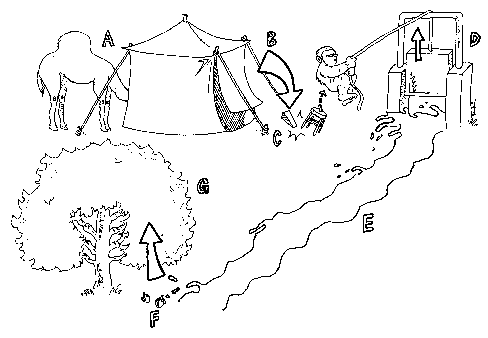There’s an interesting example in the recent Google subpoena ruling. The issue in this part of the opinion was whether the subpoena was likely to jeopardize Google’s trade secrets; the government said it wouldn’t, because the government would agree to keep the revealed information confidential; Google argued otherwise, especially because there’d also be follow-up subpoenas, so the chances of some unauthorized disclosure would become even greater.
The court generally accepted Google’s argument, expressly using a slippery-slope-related metaphor (the “thin end of the wedge”):
Google’s remaining trade secret argument is that despite the narrowness of the sample provided, it would become entangled in the underlying litigation where further discovery would risk trade secret disclosure…. On the one hand, a determination of the propriety of further discovery is for another set of motions, and not the one presently before the Court. On the other hand, further discovery in this case that would require disclosure of Google’s trade secrets is not merely a remote possibility….
In light of the comments of Plaintiffs’ counsel at the hearing, the Court can foresee further entanglement based on Plaintiffs’ challenge to the Government’s ultimate study. In litigation where the ultimate question is … fundamentally about limiting the access by minors to [Internet] adult material, it is quite likely that Plaintiffs will challenge the sample produced by Google as not representative of what minors search for or encounter on the Internet. Such an inquiry would require additional discovery, some of which may implicate Google’s confidential commercial information…. [T]his Court is concerned that a narrow sample of Google’s proprietary index and query log, while in itself not likely to lead to the disclosure of confidential information, may act as the thin blade of the wedge in exposing Google to potential disclosure of its confidential information.
This is an example, I think, of what I called a multi-peaked preferences slippery slope, but perhaps should have called an “unstable compromise slippery slope.” Right now (at the position I call 0), the bottom of the slope (which I call B) — broad discovery of Google’s data by a wide range of litigants, not just the government but the plaintiffs in the underlying cyberporn law case — is unlikely. But if the court allows the first step (which I call A), namely discovery by the government, then for various legal reasons (such as the felt need for both sides to be able to impeach each other’s evidence) step B would become much likelier. Therefore, in evaluating whether the 0->A move is sound, the court shouldn’t just focus on the costs and benefits of A, but should also include the possibility that 0->A would lead to A->B.

Camel (A) sticks his nose under the tent (B), which collapses, driving the thin end of the wedge (C) to cause monkey to open floodgates (D), letting water flow down the slippery slope (E) to irrigate acorn (F) which grows into oak (G). [Illustration by Eric Kim, from Eugene Volokh’s idea.]